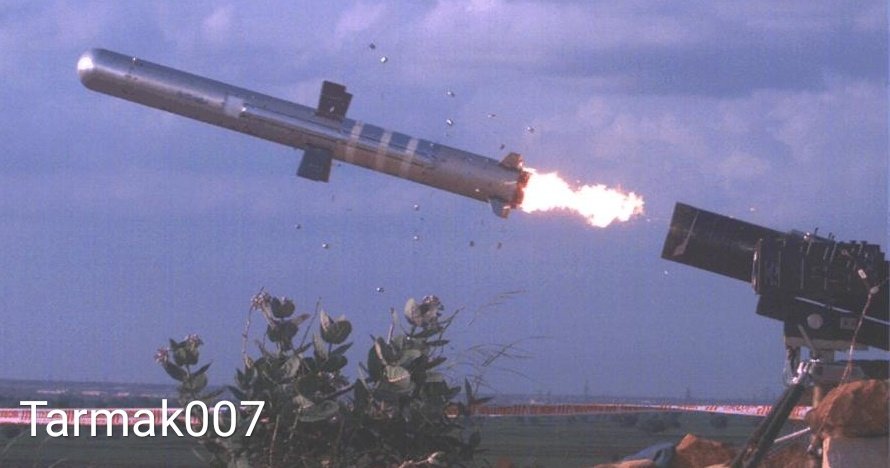1) I would beg to differ.
1.1) The BMP-2 based NAMICA is meant to replace BRDM-2. BRDM-2 did not have any weapon of the 30 mm caliber. Which means its employment doctrine does not call for such a capability. Maybe they retained an HMG for anti-infantry.
1.2) Equivalent role in British Army is performed by the Jackal-Scimitar combo. Scimitar is analogous to NAMICA/BRDM-2 and Jackal is analogous to TATA LSV/Windy. I was wondering if you could give an opinion on why NAMICA and BRDM-2 chose ATGM-only loadout whereas the Scimitar chose a cannon only loadout? Does it have to do with employment of attack helicopters in Britsh Army whereas absence of such assets (till now) in Indian Army?
2) I would beg to differ yet again.
2.1) SUV like TATA LSV are already set to complement NAMICA in its role in R&S battalions. It can't hold the massive NAG missile. It will likely be equipped with a CLGM derivative or maybe even the MPATGM.
2.2) BMP is already equipped with a lighter ATGM. Nag is just too large to fit on Mech Inf's Sarath.
2.3) Tanks already can fire ATGM from main barrel. So no need for NAG again.
3) I hope that they make a new NAG missile carrier based on the FICV family of vehicles. BMP will be out by mid-2030s.
4) I wonder if BFSR are also used by R&S Battalions.
Not quite. Bridgeheads are established and secured before the engineers get to work laying the bridge. Or else bridging ops will be impossible because Engineers, like Armoured Recovery Vehicles, are prime targets for the enemy. Details follow:-
- The Engineers and Armoured formation will move together towards the home bank of the water obstacle.
- Armour secures home bank meanwhile Infantry assaults across obstacle to secure a lodgement on far bank.
- Lodgement is reinforced with armour to establish a bridgehead. Armour arrives on ferries set up by engineers or by fording or flotation.
- Engineers set to work modifying the gradient of the banks. Armoured Amphibous Dozer wades across to modify far bank.
- Bridge is launched (in case of BLT or Sarvatra) and assembled (in case of pontoon).
In river crossings, the first few pontoons are lowered into the river and connected to form a ferry. The tank climbs on it and this ferry is pushed across the river by two motorboats to secure the far bank first.This happens after some Infantry has made it across the river via helicopter insertion or boat assault and secured a lodgement. After the tank gets to the far bank, the ferry returns and becomes a part of the pontoon bridge being laid. For canal crossing ops, a few BMP are also used to float across and secure the far bank but not sure if it happens in large river crossings as well. Hopefully in the near future, helicopter gunships will also get integrated into providing fire support to the secure the lodgement at the far bank. Also hope that the DRDO makes that MLC 70 Amphibious Floating Bridge and Ferry System soon. Till now, they have only built this AFFS of MLC 30 class:-

^ Without upgrading this, we are forced to depend on old pontoon bridges that take an unacceptable 5 hours to bridge a 200 meter water obstacle. Hope DRDO hurries up.
Here is a good video about Indian Army crossing shallow water obstacles-
But I don't understand how the gradient at the banks was modified at the far bank. They did not show the Armoured Amphibous dozer at work. Maybe because it was a demonstration, not an actual exercise.
_______________________________________________________________________________________________
NAMICA is meant for Recce and Support Battalions whose job is to scout. They are not meant to engage enemy is frontal assault even though the heavy loadout of the NAMICA suggests so. NAMICA and the TATA LSV that will complement it will primarily be tasked with "Recce by fire" missions. This is my understanding of the doctrine of employment of NAMICA in offensive role. In the defensive role, its role should be similar to the employment of the Jeep-mounted recoil-less rifles in the Battle of Asal Uttar.
My dear sir, he said that these were "not only boosters but control elements as well". You mistook it as him stating that the ATGM is powered throughout the flight by those control elements.
He did not say those are "not boosters but control elements"
He said those are "not only boosters but also control elements"
Hope you get it right this time.






